cover-image-large
Preface
Contents
1 Introduction
1.1 Basics
1.1.1 Structure of Mathematica
1.1.2 Interactive Use of Mathematica
1.1.3 Symbolic Calculations
1.1.4 Numerical Calculations
1.1.5 Graphics
1.1.6 Programming
2 Classical Mechanics
2.1 Introduction
2.2 Mathematical Tools
2.2.1 Introduction
2.2.2 Coordinates
2.2.3 Coordinate Transformations and Matrices
2.2.4 Scalars
2.2.5 Vectors
2.2.6 Tensors
2.2.7 Vector Products
2.2.8 Derivatives
2.2.9 Integrals
2.210 Exercises
2.3 Kinematics
2.3.1 Introduction
2.3.2 Velocity
2.3.3 Acceleration
2.3.4 Kinematic Examples
2.3.5 Exercises
2.4 Newtonian Mechanics
2.4.1 Introduction
2.4.2 Frame of Reference
2.4.3 Time
2.4.4 Mass
2.4.5 Newton's Laws
2.4.6 Forces in Nature
2.4.6.1 The Fundamental Forces
2.4.7 Conservation Laws
2.4.7.1 Linear Momentum
2.4.7.2 Angular Momentum
2.4.7.3 Work and Energy
2.4.7.4 Constant Forces
2.4.8 Application of Newton's Second Law
2.4.8.1 Falling Particle
2.4.8.2 Harmonic Oscillator
2.4.8.3 The Phase Diagram
2.4.8.4 Damped Harmonic Oscillator
2.4.8.5 Driven Oscillations
2.4.8.6 Solution Procedures of Liner Differential Equations
2.4.8.7 Nonlinear Oscillation
2.4.8.8 Damped Driven Nonlinear Oscillator
2.4.9 Exercises
2.4.10 Packages and Programs
2.5 Central Forces
2.5.1 Introduction
2.5.2 Kepler's Laws
2.5.3 Central Field Motion
2.5.3.1 Equations of Motion
2.5.3.2 Orbits in a Central Force Field
2.5.3.3 Effective Potential
2.5.3.4 Planet Motions
2.5.4 Two-Particle Collisions and Scattering
2.5.4.1 Elastic Collisions
2.5.4.2 Scattering Cross Section
2.5.4.3 Rutherford Scattering
2.5.5 Exercises
2.5.6 Packages and Programs
2.6 Calculus of Variations
2.6.1 Introduction
2.6.2 The Problem of Variations
2.6.3 Euler’s Equation
2.6.4 Euler Operator
2.6.5 Algorithm Used in the Calculus of Variations
2.6.6 Euler Operator for q Dependent Variables
2.6.7 Euler Operator for q + p Dimensions
2.6.8 Variations with Constraints
2.6.9 Exercises
2.6.10 Packages and Programs
2.7 Lagrange Dynamics
2.7.1 Introduction
2.7.2 Hamilton's Principle Historical Remarks
2.7.3 Hamilton's Principle
2.7.3.1 Classes of Constraints
2.7.4 Symmetries and Conservation Laws
2.7.4.1 Conservation of Energy and Translation in Time
2.7.4.2 Conservation of Momentum
2.7.4.3 Conservation of Angular Momentum
2.7.5 Exercises
2.7.6 Packages and Programs
2.8 Hamiltonian Dynamics
2.8.1 Introduction
2.8.2 Legendre Transform
2.8.3 Hamilton's Equation of Motion
2.8.4 Hamilton's Equations and the Calculus of Variation
2.8.5 Liouville's Theorem
2.8.6 Poisson Brackets
2.8.7 Manifolds and Classes
2.8.7.1 A Two-Dimensional Poisson Manifold
2.8.7.2 A Four-Dimensional Poisson Manifold
2.8.7.3 Hamilton's Equations Derived from the Manifold
2.8.7.4 Hamilton's Equations Derived from the
Hamilton–Poisson Manifold
2.8.8 Canonical Transformations
2.8.9 Generating Functions
2.8.10 Action Variables
2.8.10.1 One-Dimensional Hamilton–Jacobi Equation
2.8.10.2 Action Angle Variables for one Dimension
2.8.10.3 Separation of Hamiltonians
2.8.11 Exercises
2.8.12 Packages and Programs
2.9 Chaotic Systems
2.9.1 Introduction
2.9.2 Discrete Mappings and Hamiltonians
2.9.3 Lyapunov Exponent
2.9.4 Exercises
2.10 Rigid Body
2.10.1 Introduction
2.10.2 The Inertia Tensor
2.10.3 The Angular Momentum
2.10.4 Principal Axes of Inertia
2.10.5 Steiner's Theorem
2.10.6 Euler's Equations of Motion
2.10.7 Force-Free Motion of a Symmetrical Top
2.10.8 Motion of a Symmetrical Top in a Force Field
2.10.9 Exercises
2.10.10 Packages and Programs
3
Nonlinear Dynamics
3.1 Introduction
3.2 The Korteweg–de Vries Equation
3.3 Solution of the Korteweg–de Vries Equation
3.3.1 The Inverse Scattering Transform
3.3.2 Soliton Solutions of the Korteweg–de Vries Equation
3.4 Conservation Laws of the Korteweg–de
Vries Equation
3.4.1 Definition of Conservation Laws
3.4.2 Derivation of Conservation Laws
3.5 Numerical Solution of the Korteweg–de
Vries Equation
3.6 Exercises
3.7 Packages and Programs
3.7.1 Solution of the KdV Equation
3.7.2 Conservation Laws for the KdV Equation
3.7.3 Numerical Solution of the KdV Equation
References
Volume I
Volume II
Index
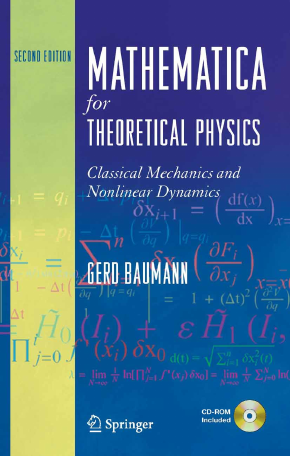
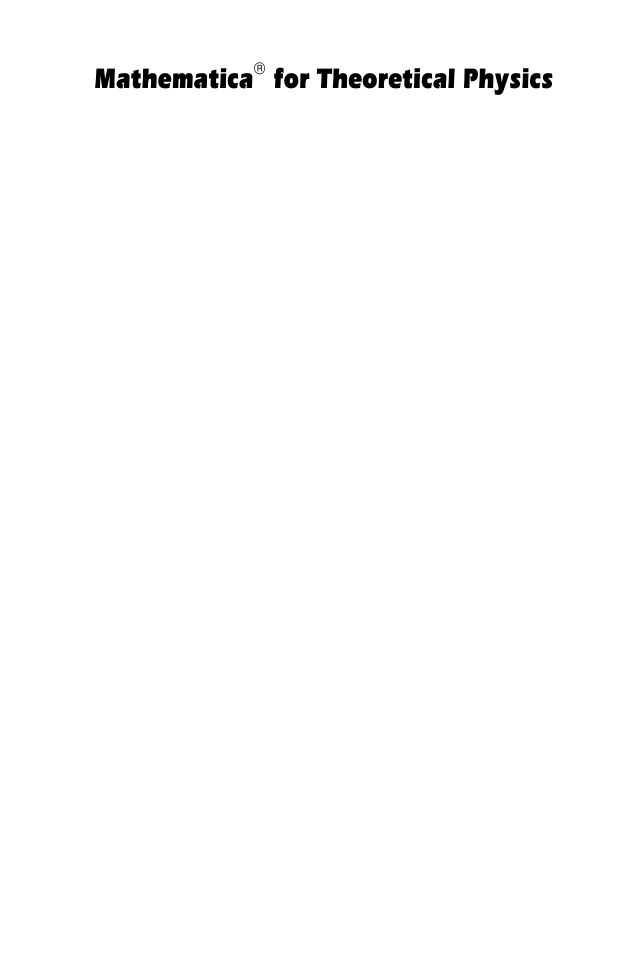
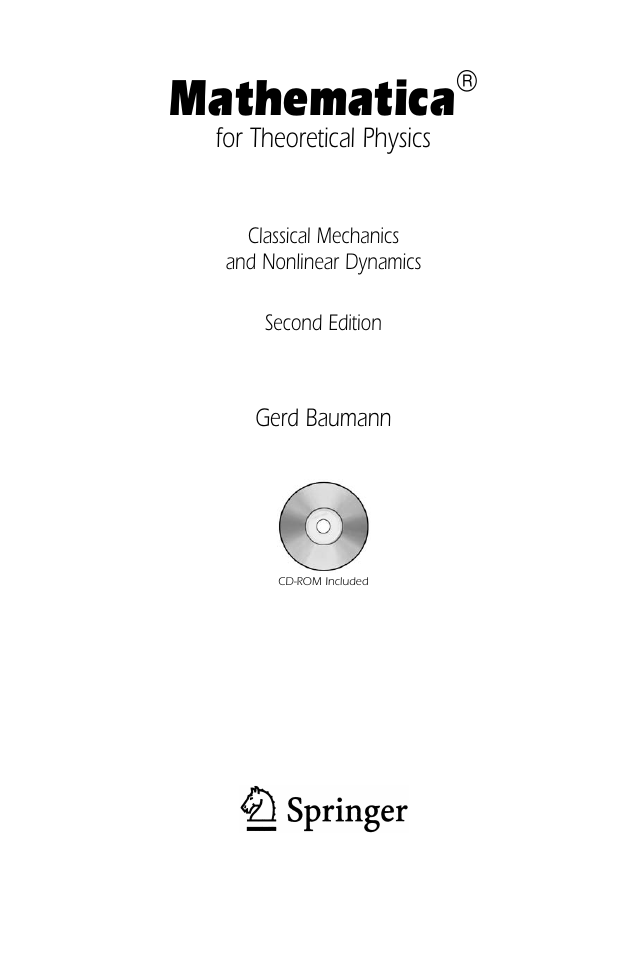
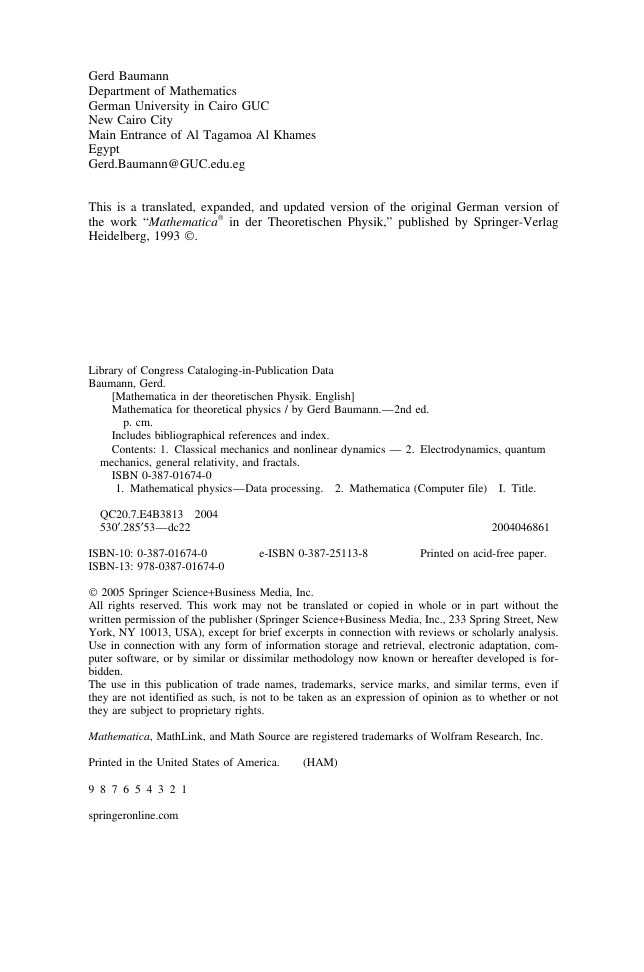

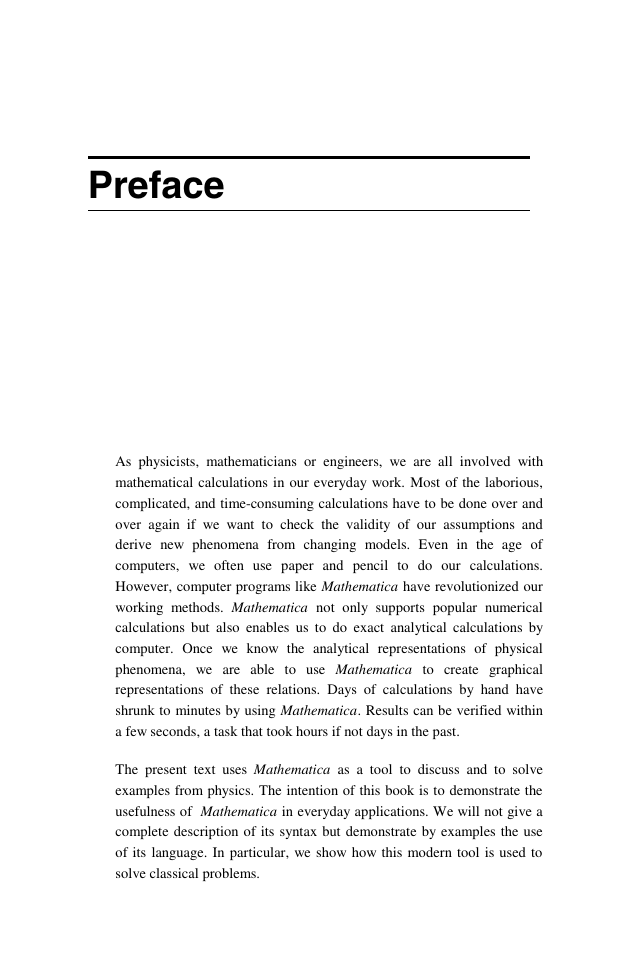
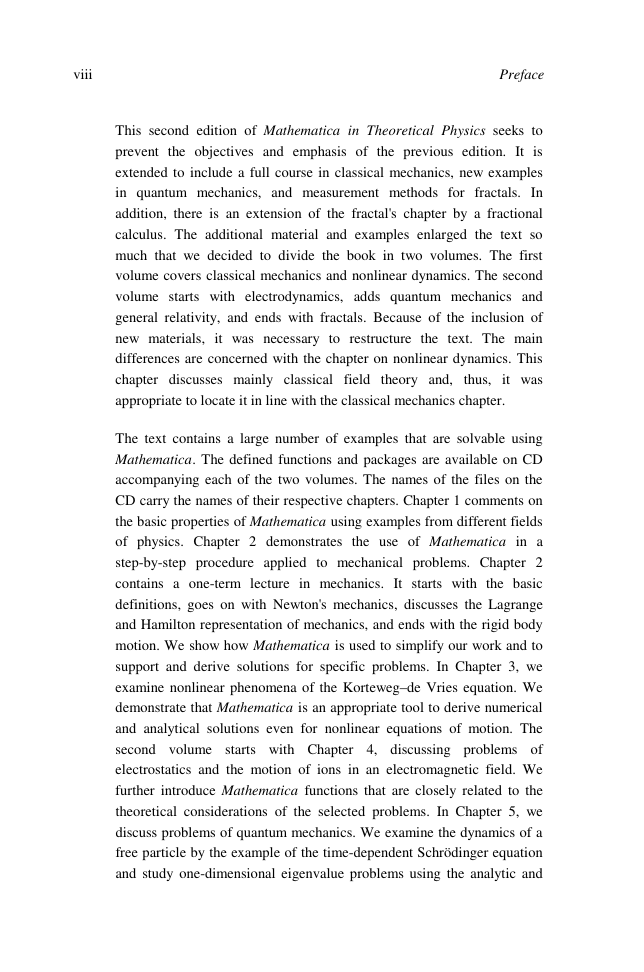
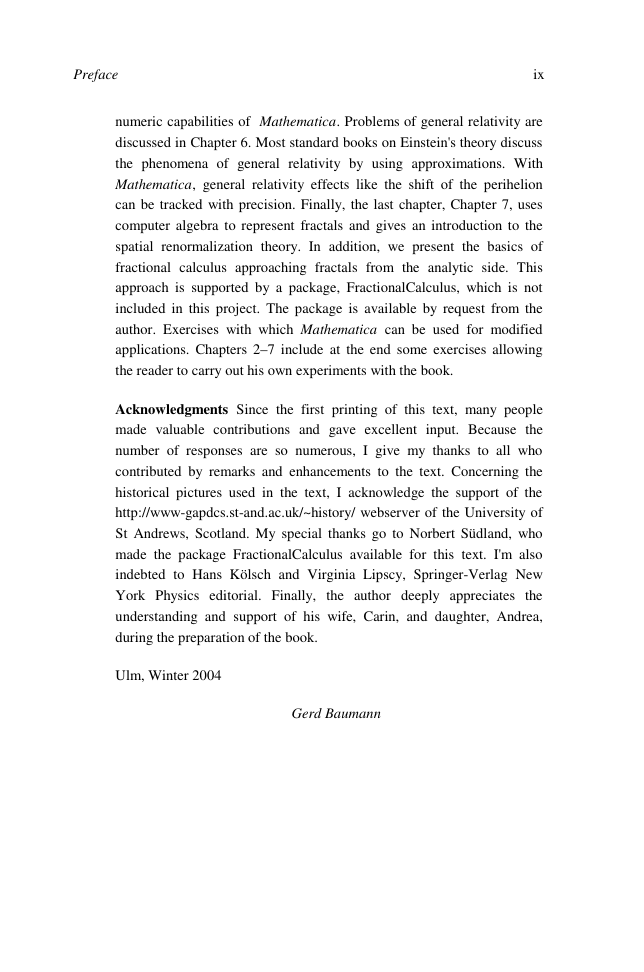








 2023年江西萍乡中考道德与法治真题及答案.doc
2023年江西萍乡中考道德与法治真题及答案.doc 2012年重庆南川中考生物真题及答案.doc
2012年重庆南川中考生物真题及答案.doc 2013年江西师范大学地理学综合及文艺理论基础考研真题.doc
2013年江西师范大学地理学综合及文艺理论基础考研真题.doc 2020年四川甘孜小升初语文真题及答案I卷.doc
2020年四川甘孜小升初语文真题及答案I卷.doc 2020年注册岩土工程师专业基础考试真题及答案.doc
2020年注册岩土工程师专业基础考试真题及答案.doc 2023-2024学年福建省厦门市九年级上学期数学月考试题及答案.doc
2023-2024学年福建省厦门市九年级上学期数学月考试题及答案.doc 2021-2022学年辽宁省沈阳市大东区九年级上学期语文期末试题及答案.doc
2021-2022学年辽宁省沈阳市大东区九年级上学期语文期末试题及答案.doc 2022-2023学年北京东城区初三第一学期物理期末试卷及答案.doc
2022-2023学年北京东城区初三第一学期物理期末试卷及答案.doc 2018上半年江西教师资格初中地理学科知识与教学能力真题及答案.doc
2018上半年江西教师资格初中地理学科知识与教学能力真题及答案.doc 2012年河北国家公务员申论考试真题及答案-省级.doc
2012年河北国家公务员申论考试真题及答案-省级.doc 2020-2021学年江苏省扬州市江都区邵樊片九年级上学期数学第一次质量检测试题及答案.doc
2020-2021学年江苏省扬州市江都区邵樊片九年级上学期数学第一次质量检测试题及答案.doc 2022下半年黑龙江教师资格证中学综合素质真题及答案.doc
2022下半年黑龙江教师资格证中学综合素质真题及答案.doc